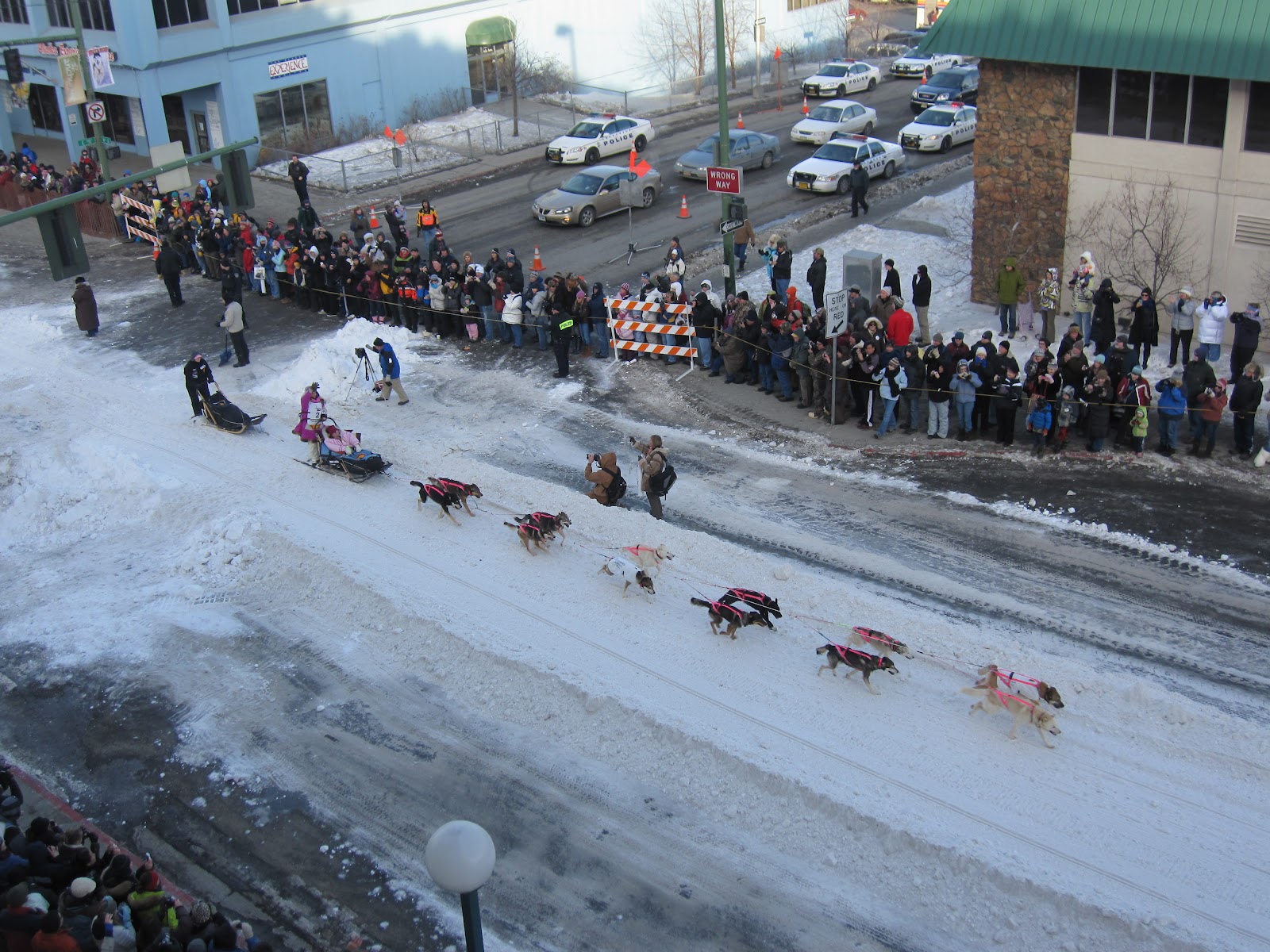Visiting Alaska in the winter may not be everyone's cup of tea, but in my opinion, it is one of the best times to visit the Last Frontier. Sure it can be cold and dark, but it is also the time of year when the animals are decked out in their winter jackets and loving life, the Aurora shows it beautiful face and the Last Great Race on Earth has everyone cheering.
This weekend marks the start of the 44th Iditarod. Beginning in 1973, the Iditarod, also known as the "Last Great Race on Earth", is an annual sled dog race running from Anchorage to Nome, AK. Every year, an average of 65 teams take part in the ceremonial start on 4th Ave, downtown Anchorage, on the first Saturday in March, with the official start taking place the next day in Willow, AK, about an hour and a half north of the city. The race ends approximately 9 to 12 days later when the last musher and his/her team of 12-16 sled dogs reaches Nome.
Did you know? The word "Iditarod" comes from the Ingalik Indian word "HaIditarod", which was the name for the river on which the town was built. It means distant place.
Did you know? The word "Iditarod" comes from the Ingalik Indian word "HaIditarod", which was the name for the river on which the town was built. It means distant place.
The Iditarod trail is composed of two routes: a northern route (run on even-numbered years) and a southern route (run on odd-numbered years). The total distance of the race is officially set at 1,049 miles, which honours Alaska's status as the 49th U.S. state. Along the route, there are several checkpoints where mushers must sign in. Some mushers prefer to camp on the trail and immediately press on at the checkpoints, while others may chose to stay and rest. Items such as food, extra booties for the dogs, batteries, tools, sled parts, etc., are repurchased in Anchorage and flown ahead to each checkpoint.
 |
| [via] |
Teams frequently race through blizzards causing whiteout conditions, sub-zero temperatures and gale-force winds, which can cause the wind chill to reach −100 °F (−73 °C)! The tough terrain and conditions the racers face along the way definitely gives you a deeper appreciation of this sport and the great state.
Interesting fact: Anchorage is so snow-starved this winter that they had to bring in 7 train cars of snow to line the streets for the ceremonial start. On top of that, the usual 11 mile start will be reduced to only half the distance.
Interesting fact: Anchorage is so snow-starved this winter that they had to bring in 7 train cars of snow to line the streets for the ceremonial start. On top of that, the usual 11 mile start will be reduced to only half the distance.
Dog mushing has been part of life in Alaska since its earliest days. Today, dog teams are not just used by Iditarod racers, but also by rural residents who rely on teams to hunt and travel and by weekend hobbyists who enjoy exploring the backcountry with man’s best friend.
And if you're at all concerned about the care of the dogs during the race, The Iditarod Trail Committee takes great pride in its role of providing excellence in dog care, not only during the race, but through an extensive program of pre-race veterinary screening. Basically put, the level of screening and health care these dogs receive is better than the majority of the human population! Before entering the Iditarod, a musher must complete approved qualifying races. Generally, it takes a minimum of two years to prepare for the experience as it simply is not possible for someone to participate in the Iditarod without having made a substantial investment of time, effort and understanding of how to properly manage and care for their dogs.
And if you're at all concerned about the care of the dogs during the race, The Iditarod Trail Committee takes great pride in its role of providing excellence in dog care, not only during the race, but through an extensive program of pre-race veterinary screening. Basically put, the level of screening and health care these dogs receive is better than the majority of the human population! Before entering the Iditarod, a musher must complete approved qualifying races. Generally, it takes a minimum of two years to prepare for the experience as it simply is not possible for someone to participate in the Iditarod without having made a substantial investment of time, effort and understanding of how to properly manage and care for their dogs.
Experiencing the Last Great Race on Earth was something on our bucket lists from the day we moved to Alaska, and now, having stood at the ceremonial start, cheering on the racers with thousands of others, is something we'll never forget.
To follow along with the Iditarod, check out the standings here.
For more on planning a visit to Alaska, check out my travel planning resources and how to pack.






